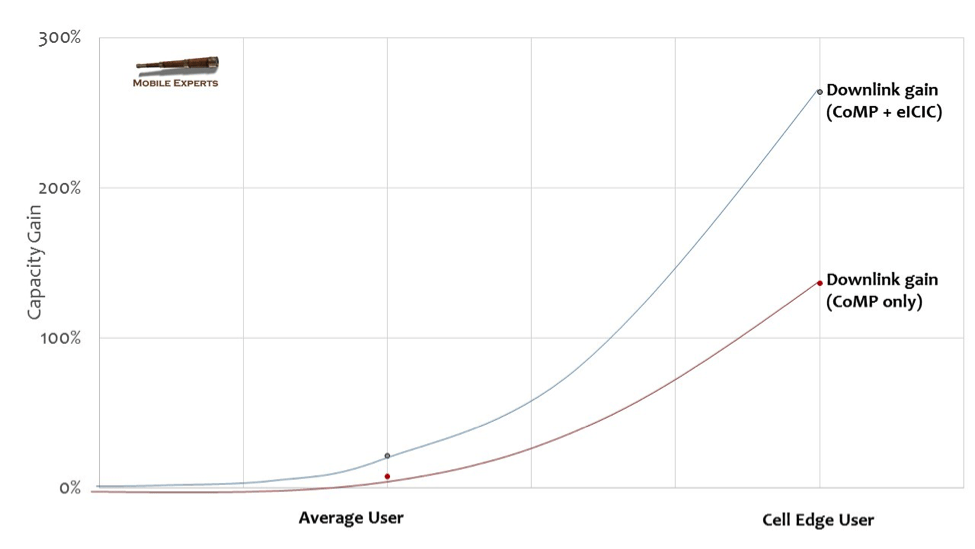Every now and then a debate emerges in industry circles that raises passions and polarizes the community. Coordinated multipoint is emerging as one such topic. At times you hear dismissive statements as in “CoMP does not work,” while on other occasions you hear of great benefits in performance with throughput gain reaching 100%. Recent trial results have added valuable information to this debate.
While the debate is most heated among radio access network vendors who are aligning in opposite camps, it has moved from being an academic discussion in 3GPP to become a major issue in the discussion on future “5G” network architecture drawing in the process operators, transport vendors, research institutes and many other ecosystem players. In this debate, proponents of CoMP argue for greater centralization of baseband functions while opponents favor decentralization. The stakes are high. But should this be the case? And what is the truth of the matter?
To answer, we need to dive into some details: CoMP allows multiple base stations to communicate with a mobile device simultaneously, which implies redundancy in signal path that enables the network to reduce interference and improve performance (downlink CoMP). CoMP also works in the uplink where a mobile device sends data to multiple base stations. The concept itself is not new – it evokes memories of CDMA and 3G soft handover where, at the cell edge, mobile data traffic flows through the primary cell as well as a secondary handover cell (actually, it can include three cells in total). This was possible in CDMA and 3G because certain functions are centralized, but LTE moved these functions to the base station as a flat architecture was favored.
In essence, CoMP benefits are not uniform and vary according to the location of the user in the cell area. The greatest benefits are realized at the cell edge where signals from multiple base stations can be of similar quality. It is not surprising to experience large performance improvements at the cell edge, even reaching 130% throughput gain, while average performance over the entire cell area is much lower – typically less than 25% and can be as low as 3% to 5%.
Source: Mobile Experts, based on Airspan/Softbank trial data
There are many different techniques to implementing CoMP. In general, these techniques fall into three categories: coordinated scheduling/coordinated beamforming; joint transmission; and transmission point selection. Each category has certain requirements on the transport link to where the data will be combined and processed jointly (hence requirements on capacity, delay and jitter). They also differ in the type of channel information that’s required to process the data. There are many possible permutations leaving much room for vendors to differentiate their solutions. Because of this, CoMP will have different performance in the uplink from the downlink and in TDD LTE from FDD LTE. In the uplink, CoMP does not require modifications or upgrades to mobile devices and has less impact from a standards perspective, but it requires a high-performance transport network. It is easier to implement more complex modes of CoMP in TD-LTE and achieve more than double the performance gain than FDD LTE because in TDD LTE the same frequency is used for the downlink and the uplink.
The network architecture also impacts the performance of CoMP where heterogeneous networks bring an added layer of complexity. This is because the performance of CoMP is different when a mobile device falls between two macro cells compared to when a small cell is involved, where there is more benefit to CoMP (in fact, CoMP gain increases with shorter distance between cell sites). Keeping with the network perspective, it is possible to implement sophisticated modes of CoMP when a mobile device is between different sectors of the same cell site where transport is not relevant while using more relaxed implementations between sectors belonging to different base station sites. This can be extended further to combine CoMP techniques with enhanced intercell interference coordination, which is a complementary feature to CoMP. In fact, many of the opponents of CoMP point to EICIC as a sufficient technique that does not require a high-quality transport link and the costs associated with it.
The variability of CoMP characteristics make it vulnerable to attack as the benefits are statistical and have been proven to have wide variations. But the fact remains that CoMP provides gain where it is mostly needed: at the cell edge. From that perspective, it complements multiple-input/multiple-output, which also has statistical performance benefits but offers the highest benefits at the cell edge (in fact, CoMP is a type of “network MIMO”). Fundamentally, CoMP is being used as a proxy for a wider battle – the one related to network architecture and the benefits of centralization of baseband resources. There is little doubt that centralization brings many performance benefits over a decentralized architecture. The issue that has to be resolved ought to center on what to centralize and what cost-performance equation will be acceptable. These are very difficult questions to address, so it is much more valuable to engage in the CoMP debate from this perspective.
In summary, the recent field trial results released by Airspan and Softbank demonstrate that significant CoMP benefits are possible, even with a distributed network of macrocells and small cells. With tightly coupled baseband processing, we can expect the performance gain to be even higher. Look for strong adoption of this technology in dense urban networks over the next few years.
Editor’s Note: Welcome to Analyst Angle. We’ve collected a group of the industry’s leading analysts to give their outlook on the hot topics in the wireless industry.


